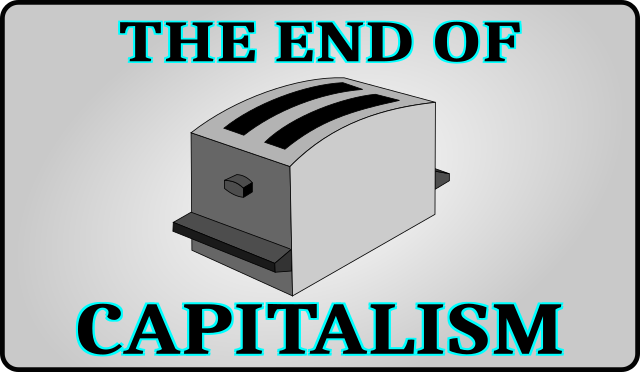Can Capitalism Survive Declining Birth Rates?
Capitalism, as it is applied today, is all about growth. If you are not growing, you are failing, you are falling behind. So, everything is about capturing more market share, selling even more widgets, prices going up… What happens to this model when we start seeing the population numbers going down?
Well, we don't really know, because it hasn't really happened before. But, many have speculated that it will not be good.
We have only know growing economies. We have not worked out being a mature economy. In fact, we made up consumerism and the disposable goods to keep producing.
We should have made one toaster for everyone, of the best quality, and long lasting. But no, we make cheap, disposable, and highly decorative toasters that need constant replacement. Even the expensive toasters are not of great quality.
So, we have wasted a lot of people's lives and resources to continue the (Crony) Capitalist ways.

The growth mad economy
The story of the Mexican fisherman and the businessman comes to mind.
The businessman encourages the fisherman to borrow money and buy a bigger boat to catch more fish, to hire more people, to catch more fish, to make more money… And the fisherman responds why should he do that when he gets enough money and fish to feed his family and has lots of free time to spend with his children.
But now, in a fractional reserve lent, debt based financial system, you need to at least keep up with inflation. Meaning that if you start off with a small store, by the time you retire you need to have grown to owning three large stores and a hundred employees. Compound interest is DEADLY.
Without our continuously improvement in production time cutting, we would have noticed just how bad central banksters were.
Imagine how bad things would be if we paid all the inflation in housing. We would have average house prices of several million for your average tiny box.
We can pay a few dollars for a T-shirt, instead of $100 each (as inflation would have). Such is our improvement in efficiency in time used to create the T-shirt.
To the inflation mad banksters, this is what they ask for. Everything going up in cost, while keeping the inflation hidden. The economy keeps growing, the GDP keeps going up. The banksters can continue their skimming operations.

What happens without growth?
Imagine a world where everyone had a house, and people had enough babies to balance out deaths.
Where is the house building industry? There is a house for everyone. To build a new one, would mean abandoning an old one. The construction trade would be mostly about repair, and sometimes replacement.
The big loser would be the banksters. There wouldn't be any mortgages. How do you get people to bid up the prices when there isn't any growing demand?
These same things happen with cars, toasters, televisions. If these items were well made, there would be no manufacturer able to make things slow enough while still affording the factory. The factory's rent would need to drop to zero. And the assembly line might be dropped to a more flexible individuals assembling individual units.
All those sales from a constantly increasing population, that needed more and more, just goes away. And if we have a non-inflationary currency, then basically all the large profits from large corporations just dry up.

What happens with negative growth?
If we have falling birth rates, and/or we start to build everything to last a century, then we end up in a economy where we have less and less to build. Basically, there isn't even demand for replacement. Manufacturers will have to build one at a time, on an indeterminate time scale. Today's corporations will no longer be able to function.
We really should think in terms of, "we have to build one for everyone" and think about how to do that efficiently. We need to include the ramp up, the continuous high quantity production, and then the ramp down, and converting to a maintenance production. Our current manufacturing paradigm doesn't have any knowledge in this area. It is all about getting unit cost down, and profit as high as possible, but what happens when we switch to a paradigm where durability, longevity and repairability are the most important?
You know, the automotive manufacturers could have just added a tablet interface, instead of building one into the car. Adding only a $250 instead of adding $10,000 dollars to the car's price tag. While also increasing repairability and longevity to the vehicle.

The giant corporation's playbook of making cheap, throw away junk to continuously keep an income flow, is coming to an end. And good riddance, they have raped the planet and the people. Instead of truly increasing the standard of living for everyone, they have made it worse for everyone.
This change also comes at the time we are developing manufacturing techniques anyone can use in their garage. Things like 3D printing, CNC milling, and your own personal assembly robots. Manufacturing is coming to our garages.
The growth based economy is over. Even with the last desperate attempt to keep it going by importing lots of people from the south, it is very much over. The giant corporations are going to crumble under their own weight. And people will live better lives with less work.


This is why the WEF wants to transition us to a circular economy where everything is offered as a subscription service or rented. They see the writing on the wall for the current planned obsolescence model and see the average person owning nothing as the only way to sustain global capitalism.